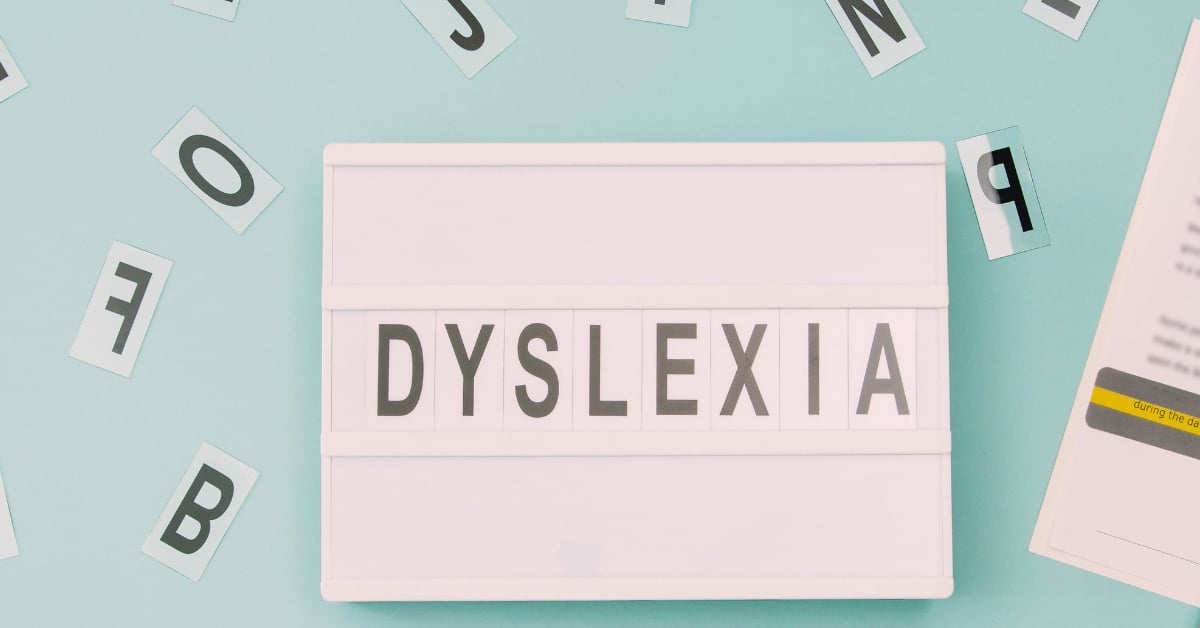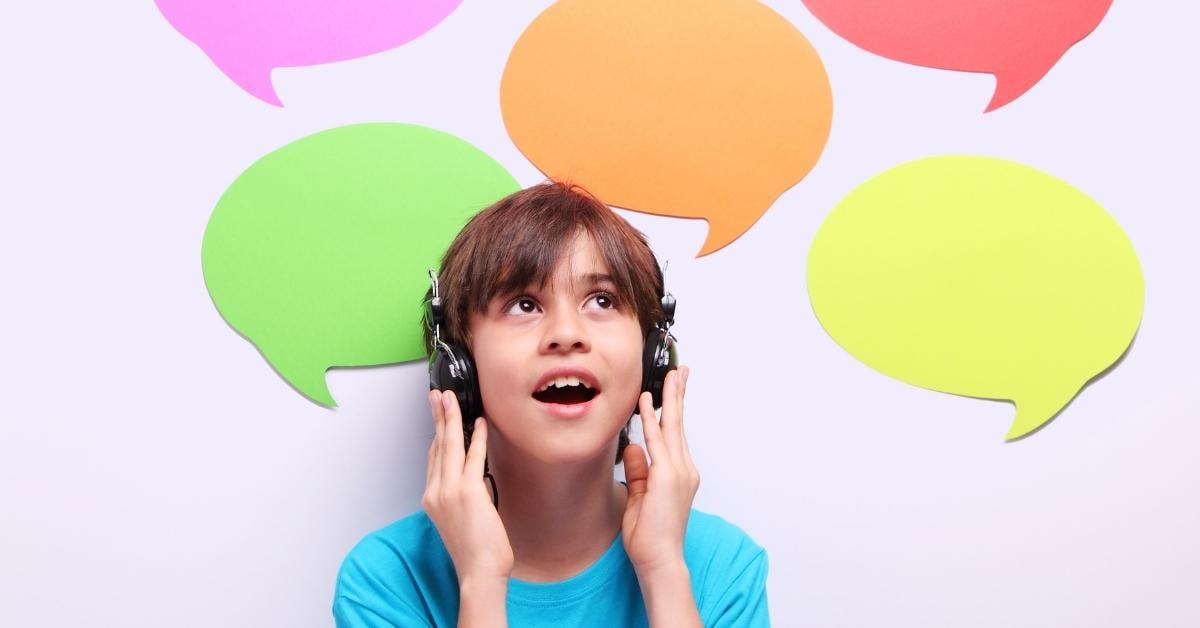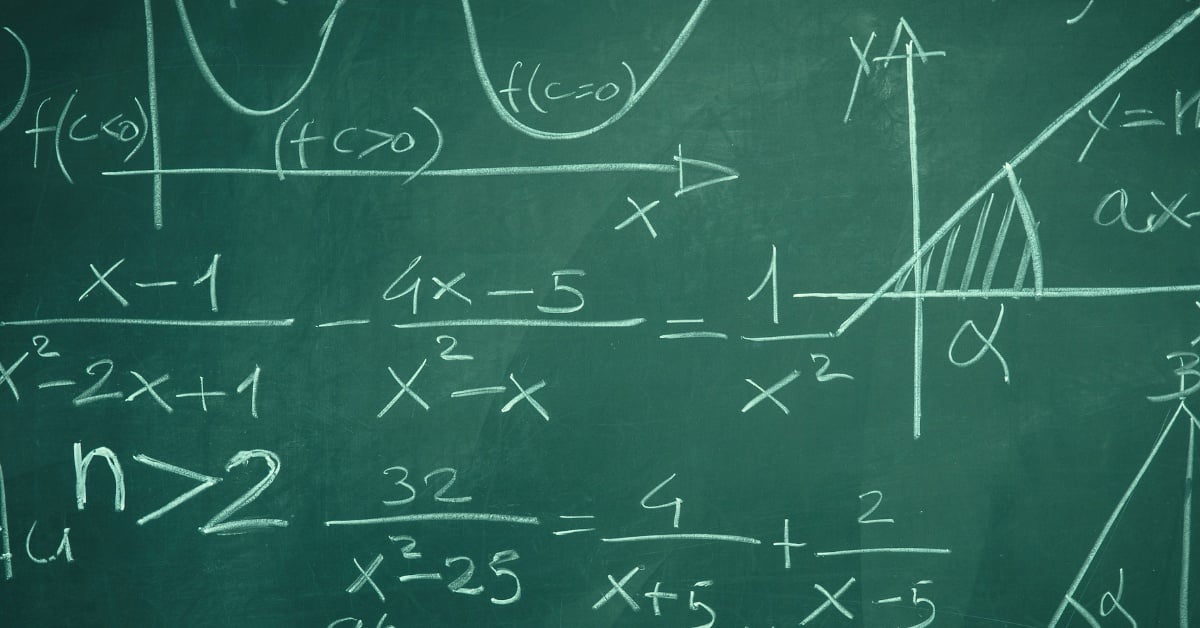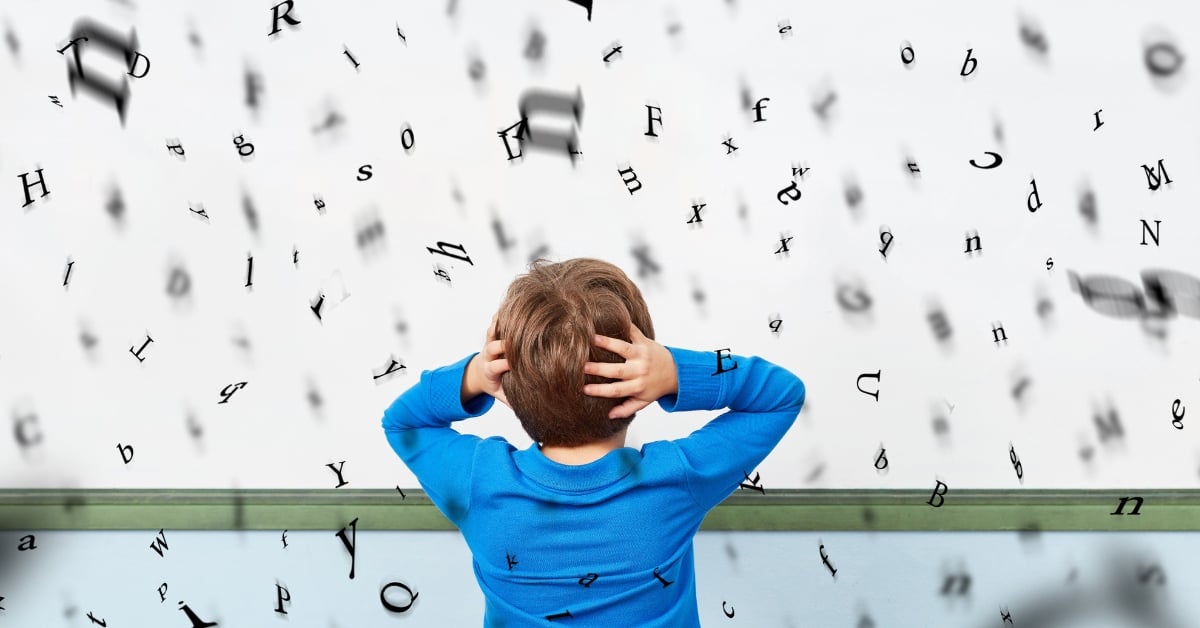Learning disabilities - also commonly referred to as learning difficulties or learning challenges (we use these terms interchangeably) - is a term that has been used to describe and identify people’s learning issues since the late 1960s.
At the very least, a learning disability is a window into the unique ways that our brains are wired. Indeed, how one learns, or struggles to learn, reveals the complex variability in how we, as individuals, retain, process and use information.
Learning disabilities are still defined as a lifelong condition: “Learning disabilities are lifelong. The way in which they are expressed may vary over an individual’s lifetime, depending on the interaction between the demands of the environment and the individual’s strengths and needs.” Learning Disabilities Association of Canada.
Arrowsmith has proven otherwise. Research on Arrowsmith has shown that learning disabilities can be overcome through the groundbreaking application of neuroplasticity.
Traditional approaches to addressing learning disabilities involve compensations or workarounds and accommodations. However, we now know that by strengthening the brain, the underlying causes of learning difficulties can be addressed. Arrowsmith - a neuroplastic solution in which compensations and accommodations are not required - challenges the conventional approach to addressing learning disabilities.
“The fact that Arrowsmith trains the brain processors that make possible reasoning and rationality, is arguably one of the most important positive developments one could imagine for our world, with its complex problems.”
- Norman Doidge, Author, The Brain That Changes Itself
With that in mind, Arrowsmith has created this guide to give you an overview of learning disabilities. We'll delve into what learning disabilities actually are, the impact they have on both individuals and society at large, how they are identified and assessed, and how they can be overcome through the power of neuroplasticity and targeted cognitive exercises.
According to a study commissioned by the NHS in the UK, two out of five people with learning disabilities are not diagnosed in childhood. If there’s something that’s holding you or your child back, it may be a learning disability.
So, what is a learning disability?
“Learning Disabilities refer to a number of disorders which may affect the acquisition, organization, retention, understanding or use of verbal or nonverbal information. Learning disabilities result from impairments in one or more processes related to perceiving, thinking, remembering or learning. These include, but are not limited to: language processing; phonological processing; visual spatial processing; processing speed; memory and attention; and executive functions (e.g. planning and decision-making)....Learning disabilities are due to genetic and/or neurobiological factors or injury that alters brain functioning in a manner which affects one or more processes related to learning.”
Individuals with learning disabilities - which come in many different forms (which we discuss more in the next section) - typically struggle to understand, interact with and fully enjoy the world around them.
As a result, learning disabilities have far-reaching consequences for individuals of all ages. This includes everything from student performance in education, the performance of adults in the workplace and even in interpersonal relationships.
Over time, if left unaddressed, learning disabilities can lead to considerable struggles, including poor mental and physical health, poorer economic outcomes, and statistically lead to a burden on society's economy as a whole.
Here are some statistics on the impact of learning disabilities:


The human brain is one of - if not the - most complex objects on our entire planet. Our brain is the source of how we understand ourselves, others, our world and our relationship to that world.
Given that each of our brain's complex makeup of strengths and weaknesses is unique, there are a multitude of cognitive variations that affect how individuals perceive, process, retain, and express information. Our unique cognitive profile underlies how we learn and if any of our cognitive functions are weak, a learning disability is often the result.
Not only are there a wide number of learning disabilities, but the way in which every single individual experiences a learning disability is different.
We will get into more detail on how our brains are uniquely different and what that means for learning disabilities in the next section, but first let’s take a look at some of the key types of learning disabilities that are commonly diagnosed.




Those with learning issues have a sense that their brain operates differently than their peers. Their intuition of course is correct, however a general reference to the brain underperforming is not comprehensive enough to understand these differences. A much more specific identification is required to understand the nature of the cognitive function that is underperforming, how it specifically impacts learning, and then ultimately how to address it.
The starting point must be defining which specific cognitive functions of the brain are underperforming, and are therefore directly contributing to the gaps and delays in learning and skill acquisition.
To review: a cognitive function refers to the role or job of a specific brain process or network of processes. You can learn more about what a cognitive function is in our blog, Cognitive Function Definition: An Overview.
Our brains are made up of many cognitive functions, each responsible for a very specific job within any task. For example, to decode a word or phrase, our brains must use the following cognitive functions to:
There are certainly many other functions involved in reading, including those responsible for comprehension, logical sequencing, and remembering details. Different cognitive functions may be more relevant to other intellectual processes such as problem solving and communication. You can learn more about these and other cognitive functions here - Arrowsmith Cognitive Function page.
Each cognitive function operates on a scale - from above average to severely impaired. A significantly weak cognitive function, depending on its role in learning, has a high chance of creating significant interference in learning. When multiple cognitive functions are weak, a learning disability is likely the result. Depending on the role of the function, even a mild weakness can cause learning issues which often lead to attentional problems.
This is important: a learning disability is experienced when one or more cognitive functions of the brain are weak or underperforming.
What is the impact of a weak Motor Symbol Sequencing cognitive function? The individual will struggle to eye track smoothly across a page; they will miss or mistake a letter, a word, or punctuation.
Weak Symbol Recognition impacts reading - the student struggles to remember the look of words. Despite multiple presentations of a word, the individual will see that word on the next page or the next day - and it will be as if they’ve not seen that word before.
Underperforming Brocas means phonics approaches to reading will be difficult. When an individual cannot remember the sounds of certain syllable combinations, it will rarely be meaningful to encourage them to ‘sound out’ the word. They simply don’t have the cognitive capacity to do so.
The more areas of cognitive function weakness we have, and the lower their functioning, the more significant the impact of the learning disability. Significant weaknesses, in multiple functions, can make learning feel almost impossible.
Each type of learning disability requires a nuanced approach that considers the individual's unique learning profile, which Arrowsmith describes as one’s individual Cognitive Profile. Traditional educational methods are limited in that they don’t go under the label to identify which cognitive functions of the brain are at the source of the learning disability. Without this specific identification and understanding of the specific cognitive functions underlying each individual’s learning disabilities, any treatment approach will be limited. This is where an understanding of the brain's cognitive processes becomes crucial.
Arrowsmith understands that learning difficulties can be overcome by strengthening the cognitive functions of the brain that are underperforming, thereby targeting the very nature of the learning disability itself.
You can find out more about your own unique Cognitive Profile, and its strengths and weaknesses, by taking our cognitive questionnaire.


Learning disabilities are often suspected when students aren’t mastering skills in reading, spelling, writing or math as expected. But learning disabilities aren’t merely a school or academic problem. Given these issues start in the brain and our brain determines our every action and reaction - the impact and signs of learning disabilities are wide ranging.
Not only do they affect most any aspect of life, but given the unique cognitive makeup of each individual - these learning disabilities will look - and feel - different from person to person.
Beyond falling behind in school or taking longer to develop academic skills, learning disabilities may appear as behaviours or even personality ‘flaws’. In fact, here are some outcomes of specific cognitive weaknesses, that may be thought of as personality traits:
In fact many signs of struggle in learning or behaviour can be directly correlated to specific cognitive functions. If you want to learn more about this, check out our Lifelong Learning page for more information about how cognitive functions play out in our lives.
These signs can persist throughout school, the workplace, and one’s personal life. Particularly if adults continue through life without an understanding or diagnosis, signs of their struggle may appear anti-social or intentional:
What’s more, when we are not able to perform as expected, when we are misunderstood, and when we misunderstand - our mental health is directly impacted. The relationship between learning disabilities and mental health is well documented. When learning disabilities are left unaddressed, many individuals will experience:
Whether an individual presents with some or all of these signs, their learning issues impact their ability to successfully complete the work at hand - whether that be learning in an educational environment, performing day-to-day tasks in a professional setting or even initiating and maintaining social relationships in their personal lives.
In essence, each individual will present and experience their learning disability differently, because they each have a unique makeup of cognitive strengths and weaknesses. Being aware of these potential signs may be the first step in identifying one’s issues.
Why is it important to observe and analyze these signs? Simply put, it can be life-changing. By understanding the root cause of a learning disability, an individualized program of cognitive strengthening can be provided.
When a student’s persistent struggle to meet academic or behavioural expectations is noted by teachers and parents, a process of identification usually begins; at some point a formal diagnostic assessment will be administered.
Given by a psychologist or psychometrist, psychoeducational assessments provide an individual with a specific learning disability diagnosis and a series of recommendations intended for application in school or at home.
For some, this identification and assessment process occurs later in life; an adult recognizes ongoing struggles in their work or personal life and seeks an explanation through a professional qualified to administer assessments. Here again, a formal diagnosis is usually accompanied by a list of recommendations.
The goal of this assessment process is to:
Even with a specific diagnosis, how one experiences their learning disability varies. In fact, it is quite possible - common even - for two people to have the same diagnosis, but have very different realities and needs.
Read an example of diagnoses presenting themselves differently here: What Does Dyslexia Look Like? The Different Faces of Dyslexia
While a formal identification of a learning disability may be required to receive assistance at school or work, it often does not recognize the unique cognitive profile of the individual.
An Arrowsmith assessment is designed to measure the specific cognitive functions that are interfering with learning. The result is not a label, but an individualized profile of cognitive strengths and weaknesses and a roadmap to overcome them. Just as no two brains are alike - no two cognitive profiles are exactly the same.
Each profile is a window into one’s unique experience. It is not a broad diagnosis like Dyslexia or ADHD, but instead a detailed report that presents which, and to what extent, specific cognitive functions are causing delays and obstacles in learning, performance, and even one’s mental health.
Learn more in our blog, How Arrowsmith Goes Beyond Learning Disability Labels.
An Arrowsmith assessment also provides insight into the actions and reactions of a person with a learning disability. Through a cognitive lens, individuals and their families can understand the experiences in a different light. Described by one family as a “User’s Guide to the Brain”, this perspective can bring understanding and patience to a parent or spouse who may previously have felt confusion, frustration or even anger over their loved one’s behaviour. Importantly, it can lead to self-compassion.
Many individuals with learning issues blame themselves: if only they worked harder, if only they were smarter (like their sister, friend, etc). An Arrowsmith assessment provides an individual with a clear path to understanding their experience without judgement.
Learn more in our blog, The Road to Empathy.
Through the Arrowsmith Cognitive Assessment, an individual and those around them, recognizes the unique nature of their strengths and challenges. Behaviours that were once seen as ‘quirks’, personality flaws, or willful - are now understood as cognitive ‘glitches’, and patterns of cognitive weaknesses that lead to obstacles in learning, behaviour and performance.
Traditional labels serve to give an individual a diagnosis. To go beyond this label, and beyond accommodations to work around the diagnosis, an Arrowsmith cognitive assessment is recommended.
.png?width=600&height=358&name=Untitled%20design%20(5).png)
.jpg?width=600&height=358&name=arrowsmith_webinar3_May_2024%20(2).jpg)
These recommendations are intended to lessen the impact of the learning difficulty, and help the individual cope in the classroom or workplace. Strategies typically fall within two categories:
Accommodations: the individual is provided with tools, technologies or resources to work around their difficulties.
Common accommodations are:
Modifications: the individual is provided with different expectations or curriculum material.
Common modifications are:
Here’s a more detailed overview about the different approaches used within the field of education to address learning disabilities: Learning Disability Diagnosis: What Happens Next?
All of these strategies start with the same assumption: the brain, and that the individual’s cognitive capacity is ‘fixed’. The belief is the brain cannot be changed, so everything around the individual must be changed to support their ability to learn.
While well-intentioned, there are challenges to these strategies.
In some cases, they are limited or create new barriers. For example, text-to-speech software is expensive and can be difficult to understand; students may experience the stigma of getting extra time, accepting help or modified curricula, teachers themselves are challenged to provide the recommendations amongst competing responsibilities. Many compensatory tools are simply ineffective (one student reported the spell check still didn’t recognize their efforts, making them feel even more shame and frustration).
There is also a debate about the long term effects of these approaches. What is the impact on the learner’s self concept? How realistic or useful are these strategies across one’s lifetime, across different situations? As one student so aptly stated, “Life doesn’t provide accommodations.”
There is another approach that does not involve accommodations or modifications. It starts from the same place as the learning disability does - the brain.
.jpg?width=1200&height=628&name=Common%20Accommodations%20for%20Dyslexia%20Why%20Theyre%20Not%20the%20Best%20Solution%20(1).jpg)
Considered one of the most important findings in the last 400 years, neuroplasticity has changed the way we look at human potential.
Certainly in the field of learning disabilities, it presents a profoundly different alternative. Why? Simply put, learning disabilities are not permanent.
"Neuroplasticity is the brain's way of rewiring itself to adapt to the world around it."
- Michael Merzenich, Professor Emeritus, UCSF, Kavli Laureate in Neuroscience
With a capacity-based approach - that is, starting with the fact that the brain’s capacity can be enhanced - Arrowsmith systematically identifies, targets and strengthens the core cause of learning disabilities. Students engage in cognitive exercises customized to their unique cognitive profile, changing their capacity to learn. In many cases, students are de-identified as having learning disabilities. Research has shown students in an Arrowsmith Program no longer need or even qualify for resource support. The rate of learning is accelerated, and there are significant gains in the acquisition of academic skills.
Arrowsmith has been called a pioneer in the application of neuroplasticity in the field of education and learning, and has been harnessing neuroplasticity to address learning disabilities for over 40 years. Arrowsmith invites the world to consider - why change everything around the learner, when the learner can be changed?
Read more about Research here in our report, Arrowsmith Full-Time Program Outcomes.
Even more promising, the brain can change and adapt across our entire lives. This adaptability means that with the right interventions and exercises, individuals with learning disabilities can strengthen neural pathways, improving their ability to process, learn and retain information, across their lifespan. Arrowsmith has revolutionized the approach to addressing learning disabilities. Learning disabilities do not need to be lifelong.




There are numerous inspiring stories of individuals who have overcome their learning disabilities through interventions based on neuroplasticity.
Read first-hand how Arrowsmith’s cognitive exercises have helped individuals strengthen their cognitive capacities and overcome learning disabilities.
This student achieved level 3 and 4 in EQAO testing (standardized educational assessment in Ontario, Canada) testing after Arrowsmith; they are currently in grade 9 doing well and have been de-identified as being Learning Disabled.
About 1½ years after completing the Arrowsmith program, an independent psychologist administered the Wechsler Adult Intelligence Scale-Revised. The IQ my daughter attained at this time was in the very superior range and 30 IQ points higher than she had tested before starting the Arrowsmith program, at which time she scored in the average range.
Jaron has an auditory processing disability. When I used to give him directions to do something, he would then look at me and say- “wait…What?” It was very hard for him to process the directions, especially for multi-tasks. Since he started Arrowsmith this year, I have not heard him ask for repetition of task directions at all. He seems much more confident that he heard the directions and he is ready to follow through on them without further clarification. In school, he didn’t have the ability to ask the teacher each time to clarify the directions so he just wouldn’t start the task at all. This could lead to a “meltdown” with Jaron unable to do the task at all. A teacher who has worked with Jaron for the past three years reports no “meltdowns” this year and Jaron’s willingness to start and complete the tasks asked of him. Arrowsmith has given Jaron confidence that he can do what is asked of him.
My listening skills have really improved. I could always hear what everyone said but I couldn’t always understand. I am progressing in speech, vocabulary, mental focus and pretty much most aspects of school. The biggest improvement that I have seen has been in math. I went from getting 70’s in Basic Math to 90’s in General Math and next year I’ll move to Advanced Math. My concentration span improved along with my interaction with my siblings and teachers. I am able to focus on the task at hand that I couldn’t do before Arrowsmith.
I think Arrowsmith should have a permanent place in schools. It’s changed me for the better.
I used to hate books but since Arrowsmith I read all the time. My writing has also improved, before it was messy and huge but Arrowsmith changed that. Arrowsmith has changed my whole life, pretty soon I can be the genius I want to be. Before Arrowsmith I didn’t fit in, I didn’t get the work we were doing at all. I couldn’t spell - now I can spell more words than I ever could imagine. My older brother used to tease me and call me names because I didn’t know 1x1 but now I know it. My brother never teases me now.
On March 17th 2021 I would begin a journey I had no idea would change the rest of my life. I had been complaining to my fiancée for a few months on the limitations my brain was experiencing with listening to other people and being able to follow along in a conversation without getting side tracked. I have suffered with extreme ADHD and anxiety my entire life. Barely being able to focus on anything longer than a few minutes. Completing stuff from start to finish has always been a challenge. Reading a book and actually processing and understanding has been a challenge. Taking notes and how to even begin that process has always been impossible for me. As the universe would have it I stumbled upon a book called The Woman Who Changed Her Brain. My fiance, being a journalist and author herself, finished the book in a few days and said MICHAEL this is the book you’ve been looking for your entire life. You have to do this program - it will fix your problem with your brain.
Over one year later here we are in May 2022 and I am on the final level. Now what this program has helped me accomplish. I am now ambidextrous. I write with both hands each day. I have progressed in my music guitar playing and I can compose and read music very easily now. Talking in big groups I can follow and process and understand completely the conversations that are happening around me. As a finance manager I could only manage working with 1 entity. I now have over 7 that I manage. I read consistently 1 book every 2 weeks and I process and understand what I am reading finally. My anxiety has tremendously decreased as my confidence has risen since being on this journey. I am able to learn anything new pretty quickly now and I can take notes for the first time in my life in an organized compartmentalized way. I can create and decipher any genre of music and create organized playlists which has always been a struggle for me. I can also confidently organize and plan my days, weeks and months with ease which has always been an issue for me.
Before doing this program my mind was a mess. It has no sense of organization. My confidence was very low and I felt helpless for the last 28 years until now. I finally see light and can navigate my life and I feel a great sense of pride for sticking and committing to this program for this long! I am forever grateful for this program for helping me push through.


Welcome to the FAQ section of this guide. Here we provide clear, concise answers to some of the most common questions we receive here in regards to learning disabilities.
While many of these questions will have been answered throughout this page, we hope the below question and answers can serve as a quick reference point for any of the questions that you may have. If you have a question that isn’t answered here about learning disabilities and The Arrowsmith Program, please do contact our team today.
A learning disability is not a problem with intelligence or motivation. Learning disabilities are simply a combination of specific cognitive functions that are underperforming, leading to difficulties with reading, writing, math, reasoning, listening, speaking, and a multitude of other daily activities. Learning disabilities, if left unaddressed, can affect one’s learning, performance and quality of life throughout one’s lifetime.
The traditional diagnosis of a learning disability is a process that involves a comprehensive evaluation by a professional. This can include educational or school psychologists, neurologists, and neuropsychologists. The Arrowsmith Cognitive Assessment is different because we go under the diagnostic label to understand for each individual the unique combination of cognitive strengths and difficulties contributing to their learning challenges. An Arrowsmith assessment identifies each learner's unique cognitive profile. A learning disability can be identified at any age.
Traditional approaches to address learning disabilities are based on the assumption that the issues causing the learning disability - weak processes in the brain - are permanent.
As such, conventional aids involve changes to the learning environment or expectations, or include providing compensatory resources. The goal is to help an individual work around their difficulties, or lessen their impact, such as providing extended time on tests, tutoring, and specialized instruction methods.
Arrowsmith rejects the notion that the brain cannot be improved. In fact, research has proven that through Arrowsmith’s capacity-based approach, individuals can strengthen critical cognitive abilities to overcome learning disabilities
Arrowsmith’s approach to learning disabilities is different from conventional methods both in premise and outcome. Arrowsmith knows that the brain can be changed, so rather than participants working around their difficulties, they work to strengthen the cognitive functions underlying the learning problems.
Arrowsmith’s harnessing of neuroplasticity—the brain's ability to change and adapt - means that the changes are not made to the learning environment, the curriculum, or expectations - but to the individual’s brain. Through targeted cognitive exercises, individuals improve their brain’s cognitive functions, reducing or eliminating the impact of their learning disabilities. Research on Arrowsmith has proven the brain can be improved both in structure and function, changes which lead to an individual’s ability to learn more easily and efficiently.
Just as learning disabilities can affect an individual at any age, a learning disability can be addressed at any age. Indeed neuroplasticity is possible throughout our lifetime: adults and seniors have used Arrowsmith to identify and solve cognitive difficulties. A capacity-based approach to learning disabilities offers an important alternative to the struggle or even shame of a learning disability, by overcoming it.
Neuroplasticity refers to the brain's remarkable ability to reorganize itself by forming new neural connections throughout life. This adaptability allows for the development of new skills and learning processes and is the foundation upon which Arrowsmith’s approach to addressing learning disabilities is built. Neuroplasticity enables significant changes in cognitive functioning, learning, acquisition of academic skills and social-emotional well-being.